The Isle of Skye is always rated amongst the best places to visit in Scotland. I’ve never seen a list that didn’t include it! Skye is a bucket list destination for many and is included on most itineraries I see for Scotland, usually in conjunction with Edinburgh, Inverness, and Glencoe.
And honestly, I get it. There is something magical and unique about Skye. When you see Skye on a clear day from the mainland, it’s truly something else. A huge array of different types of mountains sloping down to glens and valleys filled with waterfalls, all leading out to an expanse of rugged coastline, thanks to its various different peninsulas.
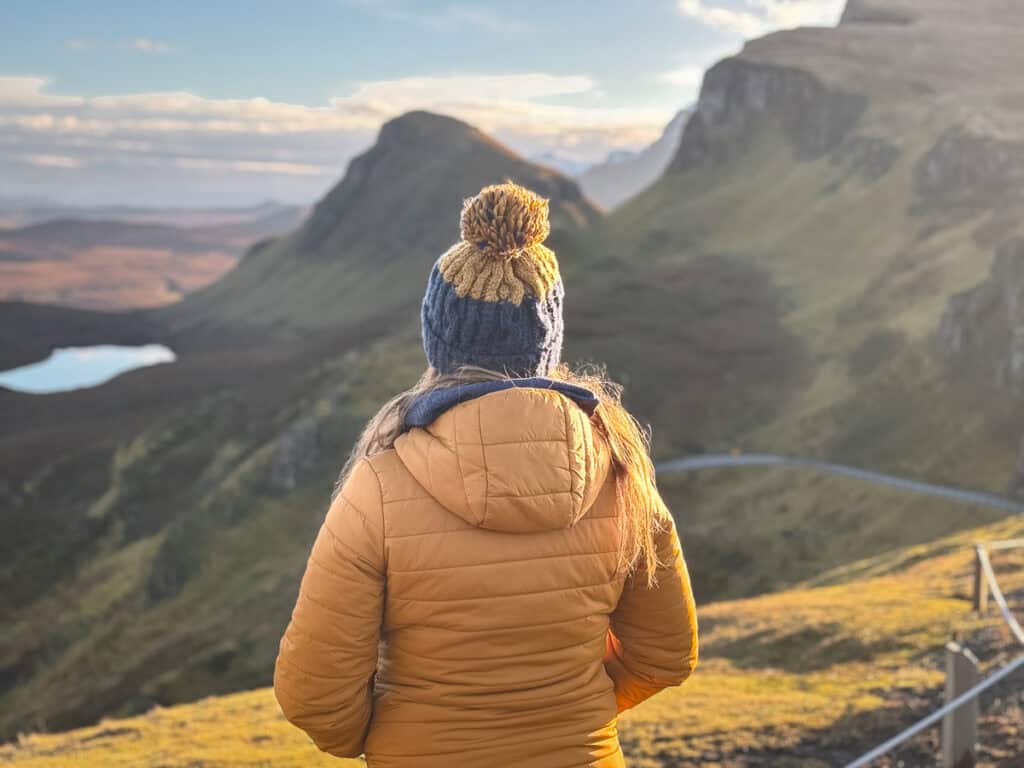
It’s also easily accessible thanks to the Skye bridge from Kyle of Lochalsh to Kyleakin, two ferry routes, from Mallaig to Armadale, and the original Skye ferry from Glenelg to Kylerhea. Changeable weather won’t generally stop you from reaching Skye like it might with other Scottish isles.
However, all of this means it’s also very popular, and expectations are also very high. While Skye is easily accessible, it is a fair distance from Edinburgh and Glasgow so getting here can take time and eat into a short stay in Scotland. It’s also the largest island in the inner Hebrides, with limited roads from north to south and an array of attractions spread across it.
You absolutely cannot see the whole island in a day, or even three days, or a week. We’ve been living on Skye for six months, and we’re not even close! Yes, if you’re travelling here, you can cover a decent amount of ground each day, but you won’t see it all, and you may not even see all the top things you’d like to. Visiting Skye means prioritising what’s most important for your own trip.
And if you visit between March and October, you absolutely can’t expect to experience a Skye with few other visitors. The permanent population of the island is around 13,000 people, but it’s thought that around 650,000 people visit annually.
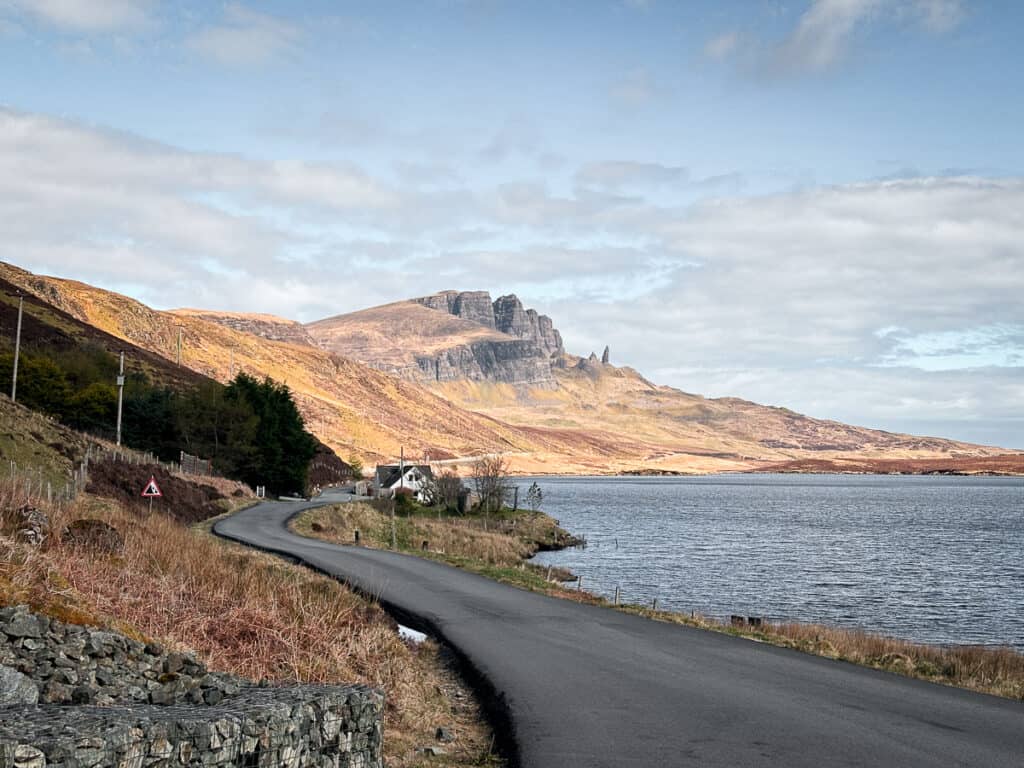
But don’t take all of this as bad news! Remember, I said Skye is a big island? You’ll find the top spots busy, but there are so many other things and areas to see that you can absolutely have an amazing trip and not feel crowded.
And that’s where these tips come in.
I don’t need to promote Skye—it’s popular enough—but I do want to help people have the best experience possible for themselves and those of us who live here.
So here are 26 things to know about visiting Skye to help you plan your trip!
1. Book Accommodation in Advance
I can’t tell you how often I’ve seen people looking for accommodation for the Isle of Skye on Facebook and being shocked there is little left, either in their price range or at all!
Skye is a popular tourist destination, so accommodation can fill up quickly. Make sure to book your stay well in advance to secure a spot that suits your preferences.
Check out Skye Rooms on Facebook to connect directly with accommodation providers.
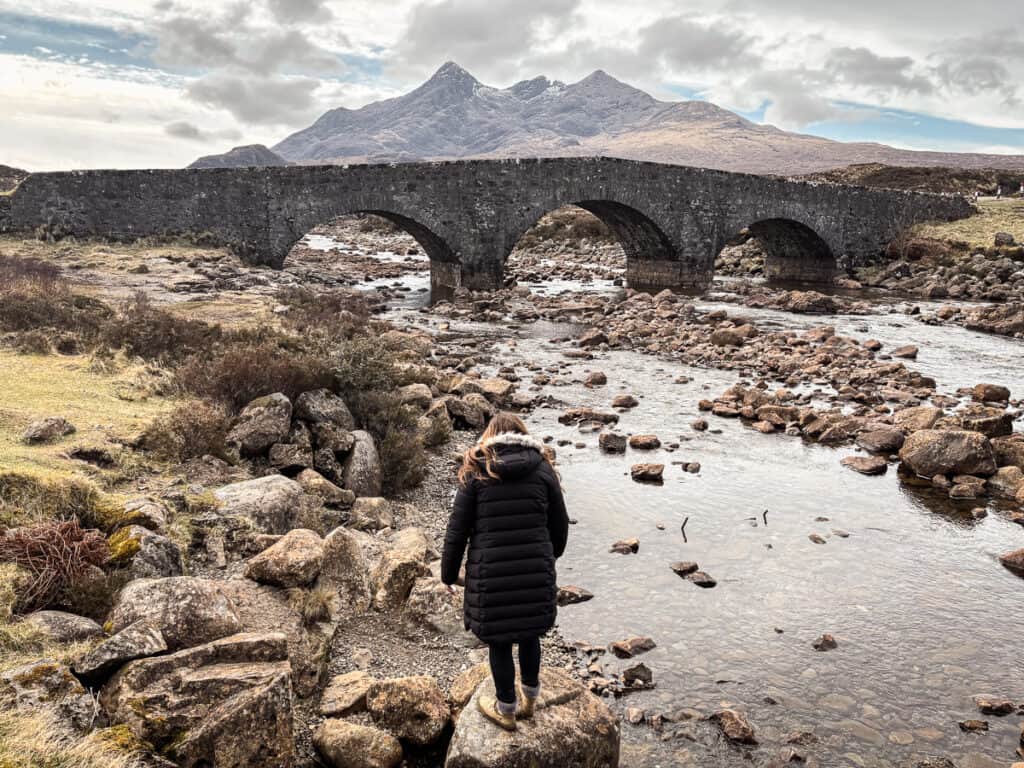
2. Book Restaurants in Advance
This is not a strict requirement, depending on the season and what type of experience you want to have.
From Easter until September is the busiest time and there are limited places to eat out.
If you’re staying somewhere without self-catering and in Portree or with few restaurant options around, then I’d highly recommend getting something booked for your dinner.
Likewise, if there’s somewhere you really want to eat, then get it booked in.
Having said that, you should also look out with Portree and other main areas like Broadford or Dunvegan for alternative dining experiences. There are some great larger hotels that have lovely restaurants, and also lots of takeaway places about too, if you don’t want to be confined to a schedule.
You don’t necessarily need to book far in advance, although the most popular places will sometimes be booked out a few days ahead. For others, you can always make a reservation the day before or day of, once you’ve arrived.
I plan on writing a lot more about places to eat to help so make sure you sign up to my newsletter if you’re planning a trip!
3. Rent a Car or Take a Guided Tour
To explore the island, renting a car or joining a guided tour is recommended. Skye’s remote areas can be difficult to reach without private transport.
Definitely see my tips on driving, however!
I actually think taking a private tour is probably the best way to see the island. Tour guides will know when to visit places, the best routes to take, and be able to give you lots more information than you could likely find out on your own.
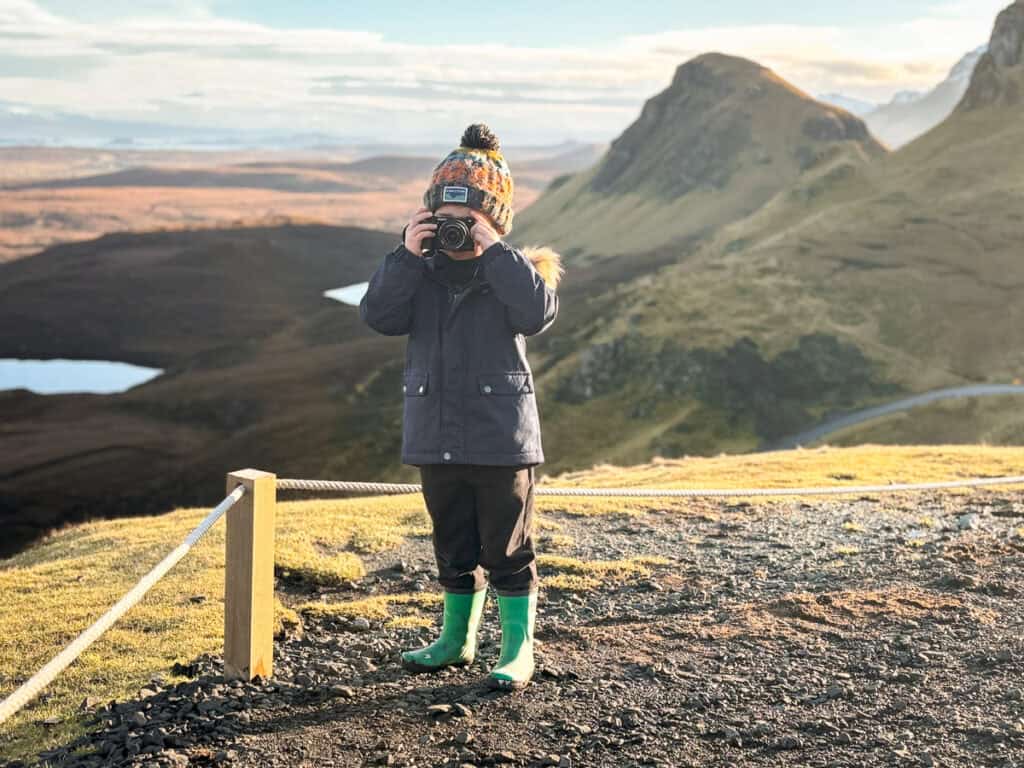
4. Plan Your Itinerary
Due to winding roads and traffic, the distances between sites can be deceivingly long. Plan your itinerary carefully to maximize your time and include additional travel time for detours or stops along the way.
Unless you’re staying on Skye for a significant amount of time, I’d not recommend just getting in your car and driving around. As mentioned, Skye is a big island, so planning out an order for visiting the places you want to go makes sense to make the most of your time. It also gives you a chance to see places to eat in the area for lunch.
I like to save pins on Google maps then I can open it and see what I’ve saved close together and plan from there.
5. Be Prepared for Changeable Weather
Skye’s weather can be unpredictable, even in the summer. Bring extra layers, including a lightweight, packable down jacket or fleece, to stay warm if you’re planning on doing any walking. I’d also always recommend having a waterproof jacket with you.
When I visited the Quiraing with my parents, it was a perfectly sunny day, except for the 20 minutes when a hail storm blew over when we were trying to take photos!
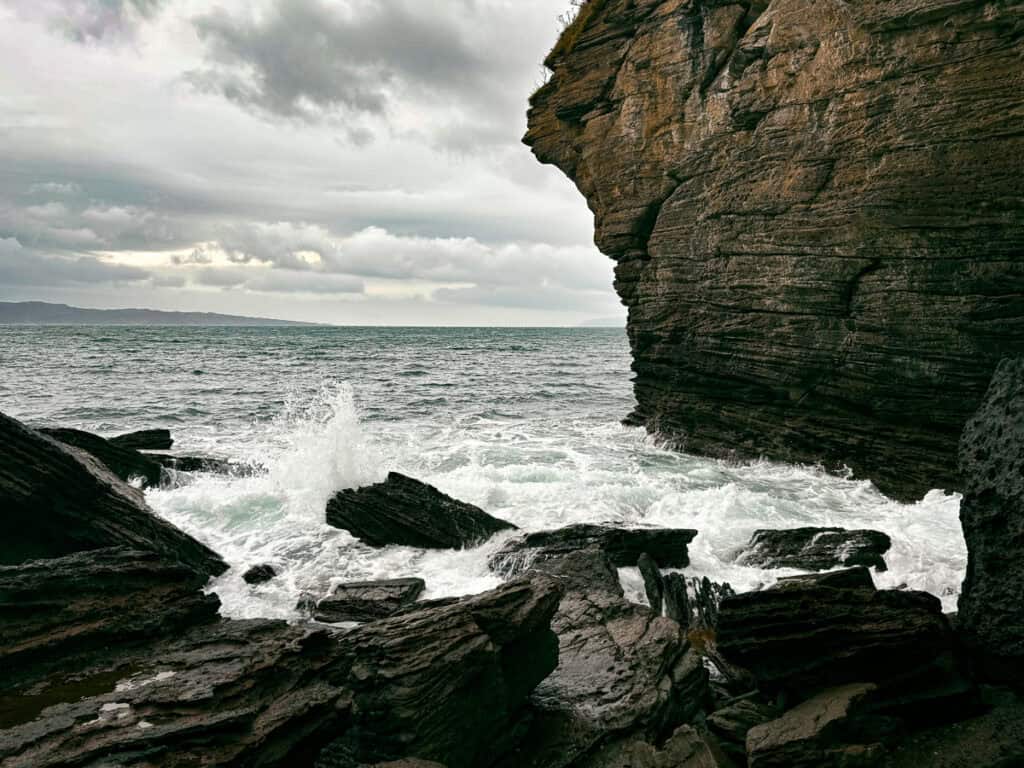
6. Respect the Environment
Skye’s natural beauty is its greatest asset, so respect the environment by staying on designated paths, disposing of waste properly, and leaving no trace of your visit.
As the island and certain locations have become more popular over time it’s been necessary for paths and facilities to be built, because the landscape was being destroyed anyway without them.
Please stick to these paths!
7. Support Local Businesses
Support local businesses by dining, shopping, or booking accommodations locally. This supports the local economy and allows you to experience authentic Skye culture and hospitality.
There are lots of amazingly creative people on Skye doing really cool things, and people running great businesses in the form of cafes, restaurants, shops, and tourism activities. Support them where you can!
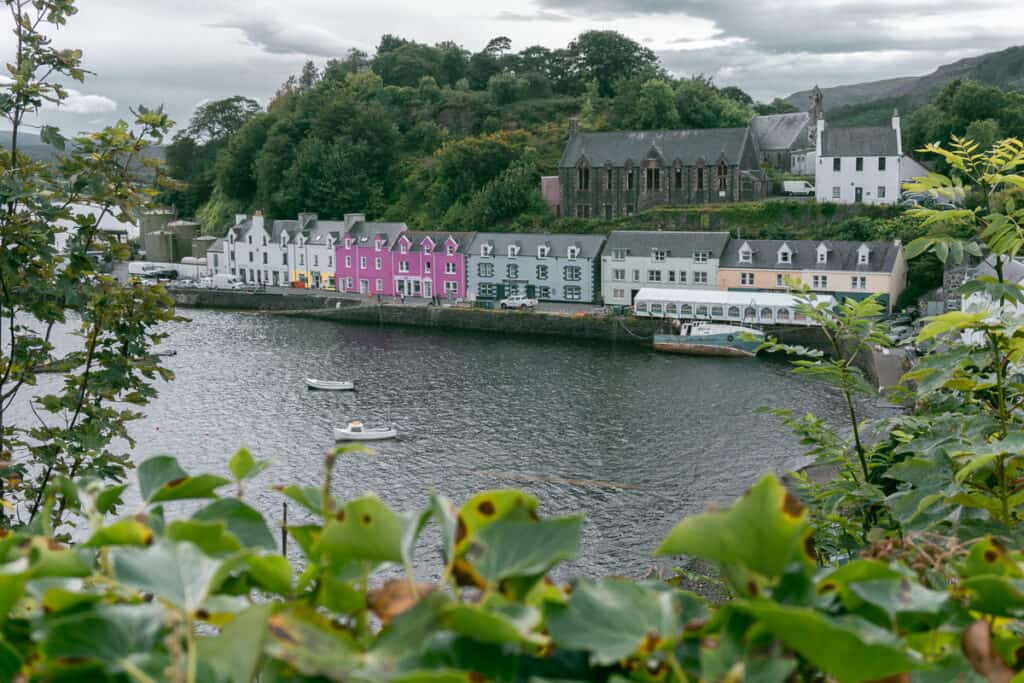
8. Stay Flexible
Weather and other factors can change plans unexpectedly. Have backup options and use a reliable weather app to monitor conditions, especially if you’re planning outdoor activities like hiking.
To be honest, I haven’t managed to find a weather app I fully trust, more so than just scanning the horizon in all directions and seeing what’s coming! You can generally spot rain on the way.
Skye has many microclimates. There can be sea fog on one side of the island and brilliant sunshine on the other. Likewise for wind and rain. Some places will be sheltered one day and others not, and it’ll be the opposite the next.
Have an idea of your day and trip but be willing to switch days around and scrap things altogether. Don’t worry, you’ll find something just as good to do!
9. Practice Safe Driving
We’ve not lived here for long, but already, seeing the driving and parking that goes on around Skye has been eye-opening.
Skye’s roads are narrow and winding. Drive carefully, watch for livestock, and be prepared to pull over to let oncoming traffic pass and to let traffic behind you pass if you’re holding things up. Patience and courtesy are key.
Don’t be pushed into driving outside of your comfort zone, but also don’t hold up traffic any longer than necessary – look for the next place to pull over and indicate you’re doing so.
Passing places are NOT for parking and should never be used for that.
If you’re in a campervan, try to take up the least amount of space possible. This means not parking across four spaces in the Co-op carpark when two would do.
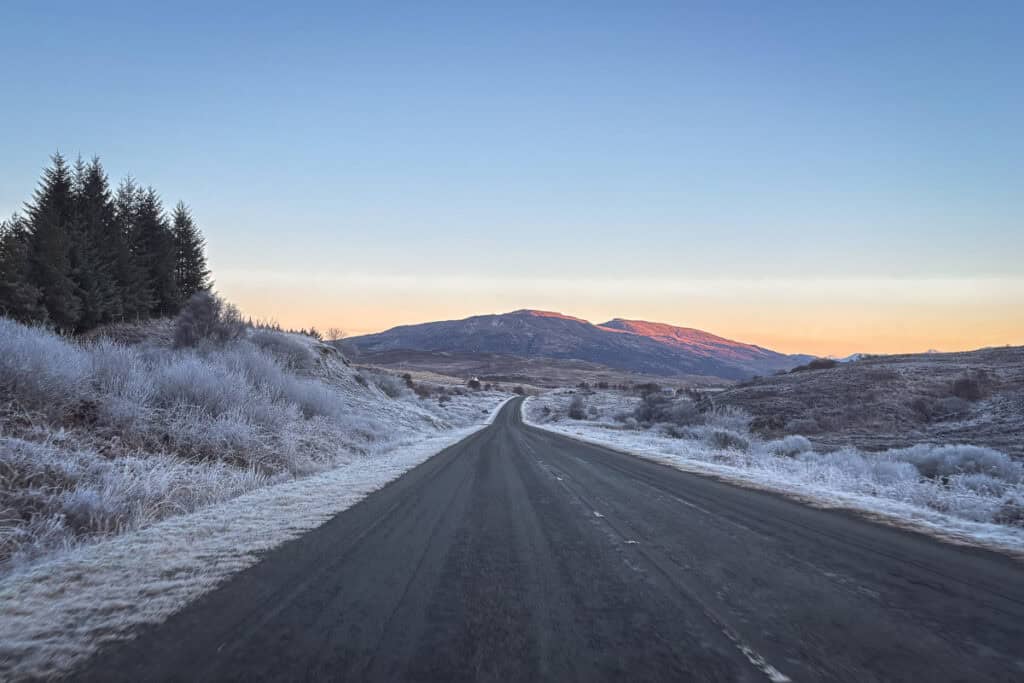
10. Pack Waterproof Gear
Given Skye’s rainy climate, bring waterproof jackets, pants, and bags to protect yourself and your belongings from getting soaked.
You don’t need to go overboard if you’re not doing a lot of hiking but wet feet are no fun, so wear something waterproof on your feet and a jacket at least.
And if you’re lucky and there’s no rain, great! But be prepared for it.
11. Be Mindful of Wildlife
Skye is home to a variety of wildlife, including seals, otters, eagles, and red deer. Keep a respectful distance and avoid disturbing or feeding wild animals during your encounters.
This goes for Highland Cattle too. While they’re an awesome animal to see, with their unique horns, there’s no need to get up close and personal to a fence, and definitely not INSIDE a fence, or park in crazy locations to try and see them.
12. Allow Time for Relaxation
While it’s tempting to pack your itinerary with sightseeing and activities, be sure to schedule some downtime to relax and enjoy Skye’s stunning landscapes.
Sometimes just taking a drive and finding somewhere to have a coffee can be a great experience.
The first time I visited Skye I didn’t see even half of the “top” sights, but I still had an amazing time and got to see lots of stunning vistas and had lots of fun. You don’t need to tick off boxes here, just get out and enjoy the drives, walks, and atmosphere.
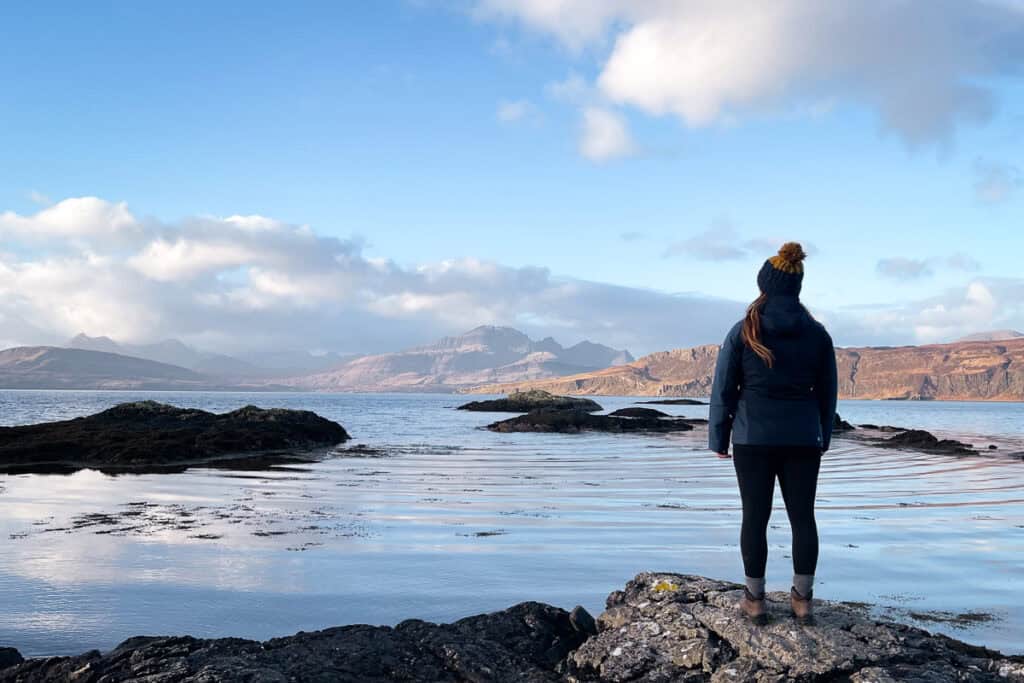
13. Mind the Midges
Midges are small biting insects that are a bit of a pain, literally. They’re about from around mid-May until September particularly when it’s damp and there’s little to no wind.
You don’t need to stress about them but you can get Smidge, a well-known repellent, if you want to be prepared, and wear long sleeves and trousers to minimise exposure if you’re going to be out in the conditions they might be in.
14. Check for Special Events
Skye hosts a variety of events and festivals throughout the year, ranging from Highland games to music festivals. Check local event listings before your trip to discover unique experiences or to make sure your own plans won’t be unknowingly disrupted.
15. Pack Snacks
When you’re going out for the day it’s a good idea to pack some snacks and water to take with you. While there are cafes in unlikely remote spots, they may be busy or you might just be in the wrong spot at the wrong time for lunch.
16. Travel Early or Late
Visit popular attractions early in the morning or later in the evening to avoid crowds and get better photo opportunities.
Summer means really long days. In June, sunrise is around 4:30 a.m., and sunset is at 10:30 p.m., and the residual light can last even longer. Even in August, the sun rises around 5.30-6.30 am and sets around 8.30-9.30 pm, so there’s plenty of time for exploring!
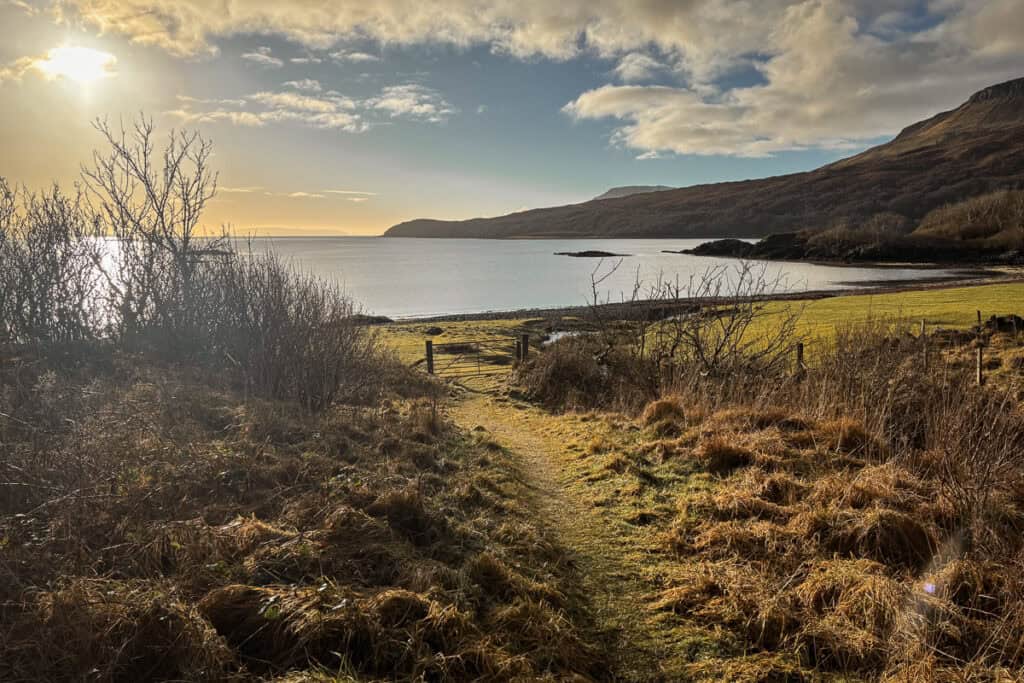
17. Download Offline Maps
I’m always annoyed because Phil gets service with EE in places where I have absolutely NONE with o2. There are definitely black spots for service on Skye, so it’s best to download any map you need for offline access.
18. Bring Some Cash
Most places accept cards these days, but some of the smaller ones may have a limit or may appreciate cash instead due to bank fees. There are also parking fees for some places where you can pay by card but it might be easier to use cash due to your own bank fees!
19. Use Local Knowledge
If you’re staying at a place where you can speak to your hosts, then ask them for recommendations for places to visit and things to eat. They can offer insights you might not have found elsewhere.
While many locals will be going about their daily lives and not always up for a chat, if you have the opportunity to speak to shop or restaurant staff without disrupting them, then you can do so. It’s often easy to make a few nice comments and see if any kind of chat comes about from that!
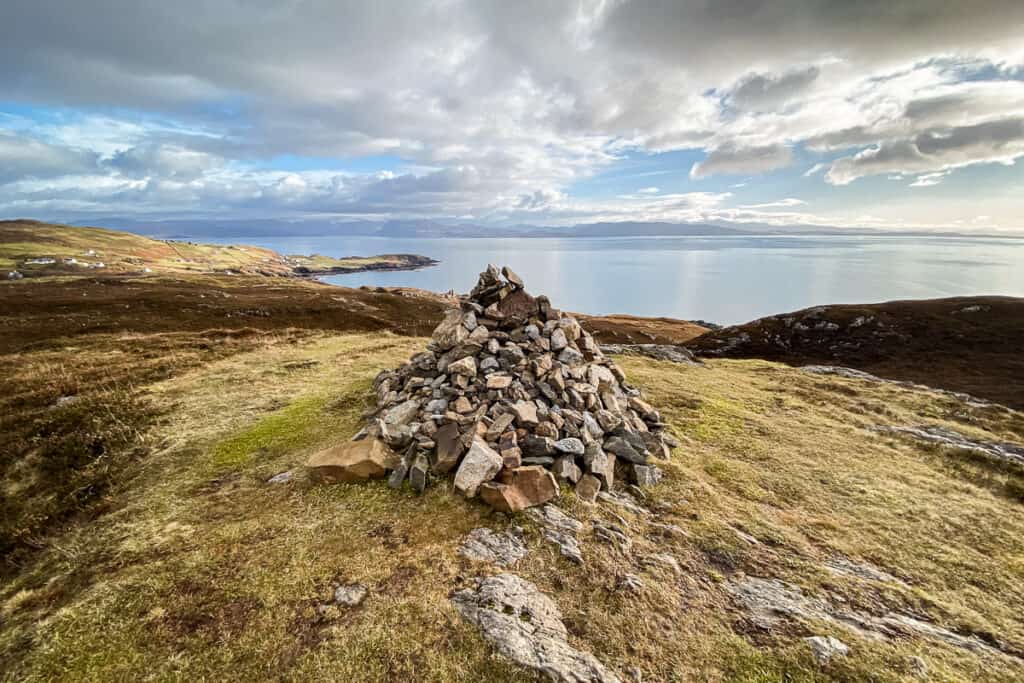
20. Respect Private Property
When exploring, respect private property and observe signs indicating restricted areas or parking. Stick to designated paths and avoid trespassing.
Be really mindful of where you park, especially. NEVER park in a passing spot. If all spaces are taken you may just need to return at a different time.
21. Pack for Outdoor Adventures
For outdoor activities like hiking pack appropriate gear such as sturdy footwear, rain gear, sunscreen, and midge repellent if it’s the season.
The ground can be quite boggy even if you’re not planning on doing a big walk, and it’s easier to have waterproof shoes or hiking boots on to walk along beaches etc so I’d recommend something like that.
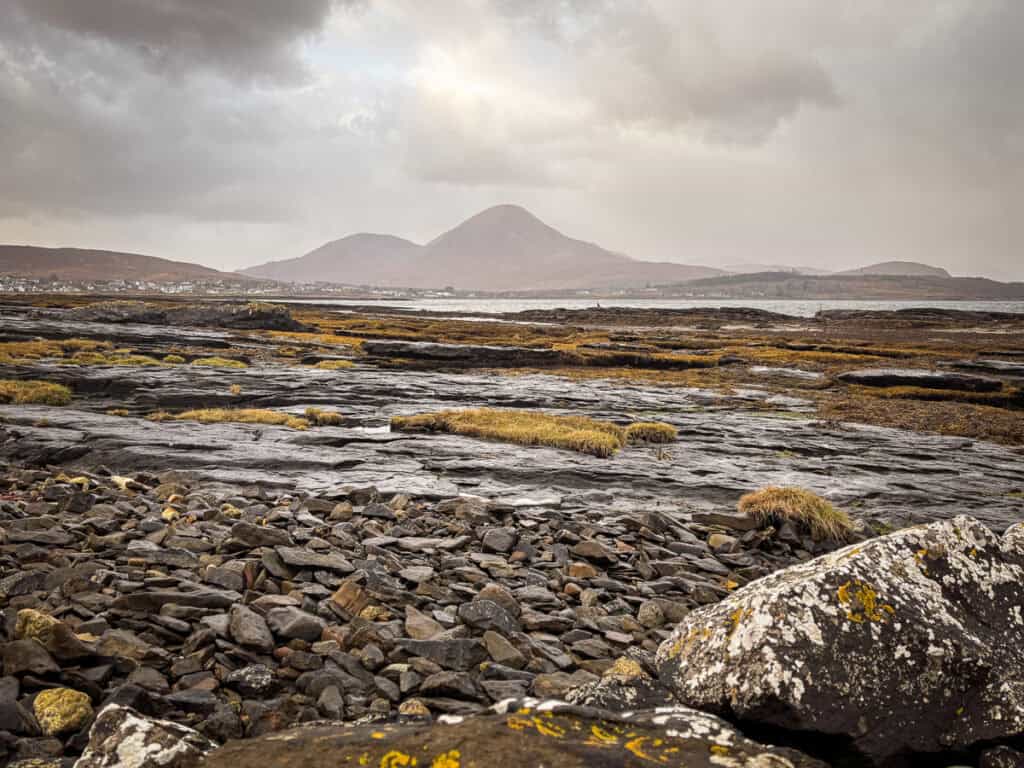
22. Use Restrooms When Available
Restroom facilities can be limited on Skye. Take advantage of public restrooms in towns or at popular attractions to avoid being caught without access to a toilet. Some of these take a small fee to use the bathroom but it’s generally contactless rather than coins.
If you need to use a restroom in a cafe, then buy something.
23. Be Prepared for an Emergency
You never know when an accident might happen, either on the road, or when you’re exploring somewhere. Twisted ankles aren’t uncommon!
Carry basic first aid items like bandaids for blisters and paracetamol.
The emergency number is 999, but be aware that Skye has some black spots.
Always let someone know where you’ll be if you’re alone and what time to expect you back, and consider a personal locator beacon if you’re going hiking alone.
24. Plan for Limited Connectivity
Prepare for limited phone service or internet access in some areas. Download necessary information in advance and let someone know your plans if you’re going to be out in remote locations.
You can download offline maps for navigation, but if you’re hiking we’d recommend an OS map, and knowing how to use it.
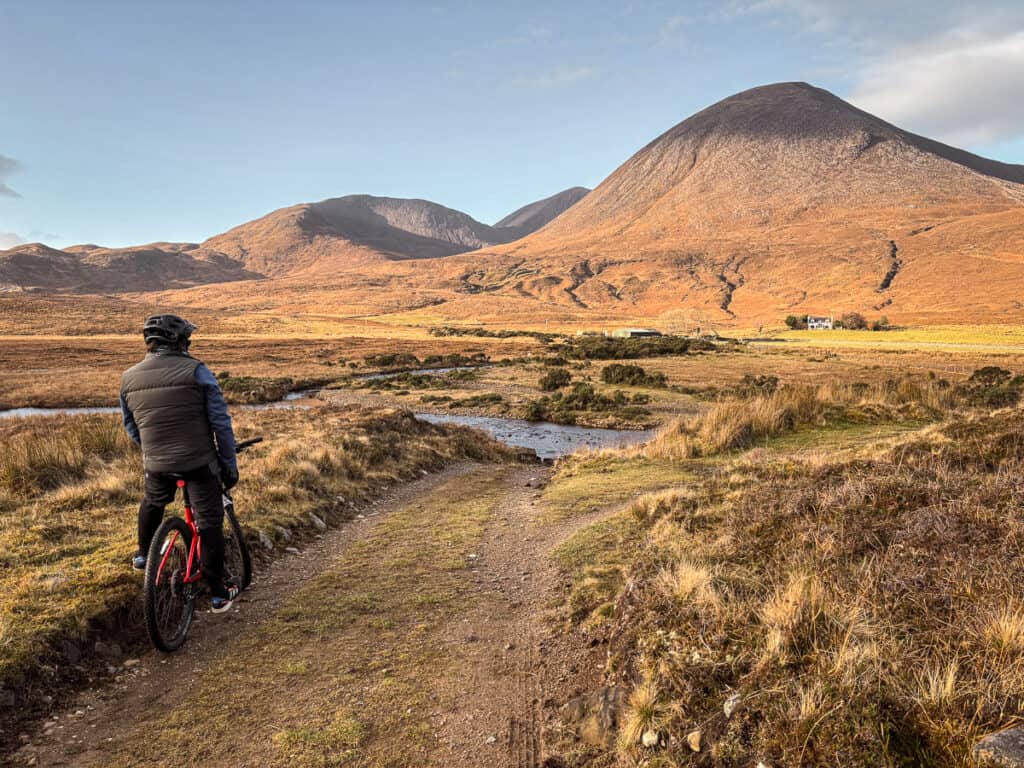
25. Stay in Designated Camping Areas
If you’re camping or travelling in a campervan, stick to designated camping sites and parking areas.
This supports the local community and gives you access to facilities too. You can read more about campgrounds on Skye here.
Wild camping is discouraged in many parts of Skye due to environmental concerns, so always follow local regulations. Absolutely do not overnight park where signs say not to do so.
26. And importantly… there’s more than Skye!
Skye is a great island to explore, but there are also some nearby locations worth adventuring to as well.
Consider a day trip to Raasay to visit the distillery that’s now bringing work back to the island and a drive up north to Calum’s Road. This is the easiest one to do.
We also love taking the Original Skye Ferry from Kylerhea to Glenelg or vice versa. There is no need to book; you just show up and wait for the last remaining turntable ferry in the world. It’s a really fun experience, and you can visit the cafe on the other side. The Glenelg Inn also serves excellent food. The drive across the Ratagan Pass to Sheil Bridge is worth it as well, or vice versa.
Mallaig is another fun little trip if you have the time. You can take the ferry from Armadale to there and back as a foot passenger. The Bakehouse there is amazing, the heritage centre is great, and there are some fun Harry Potter-related stores, thanks to it being the end of the line for the Jacobite Steam train (also known to some as the Harry Potter train) that you may be able to see if the timing is right.
Not to mention the gorgeous seaside village of Plockton, and Dornie, where you can see Eilean Donan Castle and visit Manuela’s Bakery.
Applecross is a longer but possible day trip, as well as Lochcarron and Attadale Gardens.
You can also venture from Skye out to the Small Isles via Mallaig.
And those are my top tips for visiting Skye, as someone who lives here! Hopefully this helps with your Skye trip planning.
Sonja x
